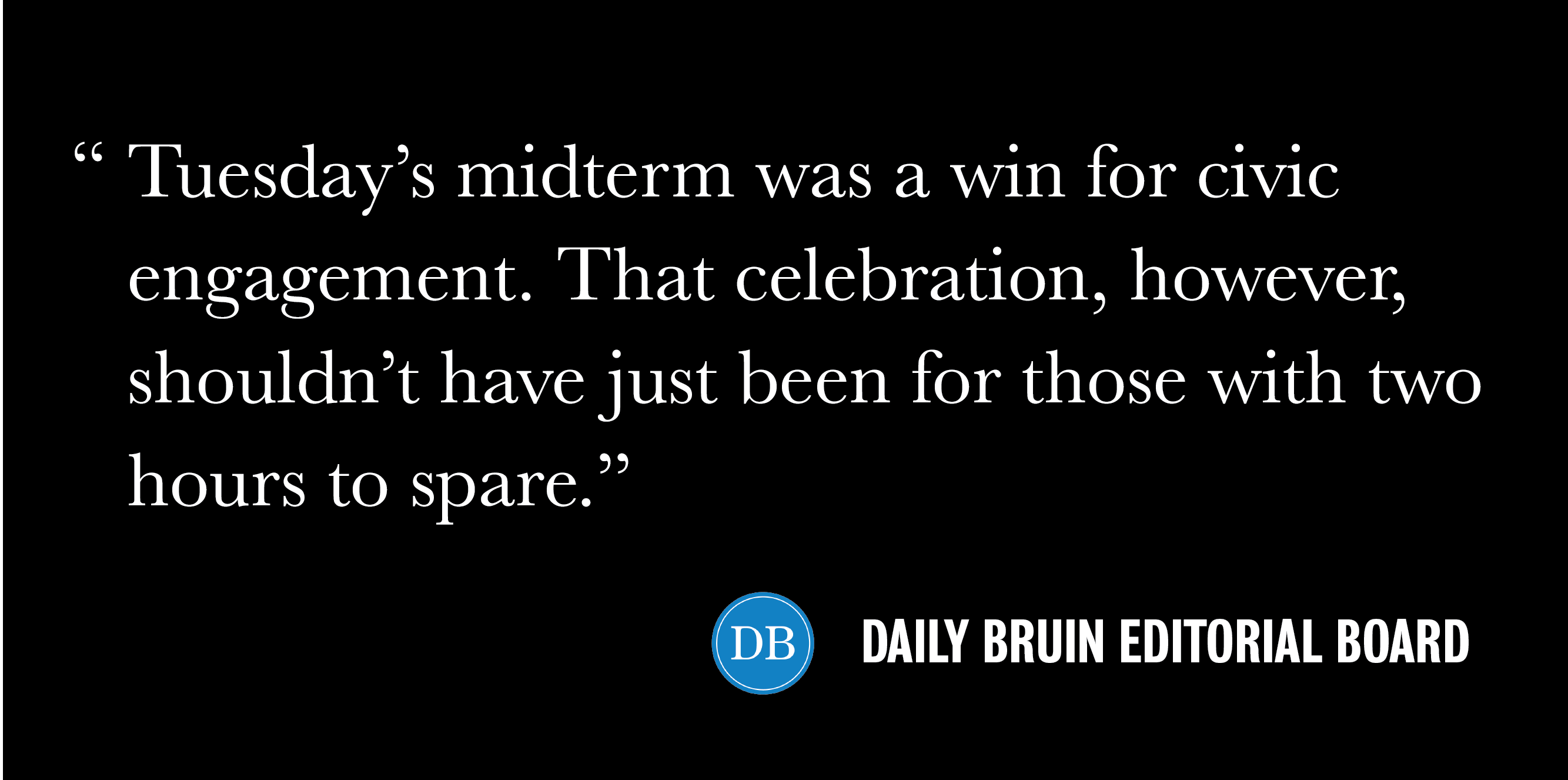The blue wave came and went. But at UCLA, it wasn’t ideology that kept students from voting – it was long lines.
Tuesday’s midterm elections were a critical point for the United States’ government, with students’ votes not only affecting who represents California in Washington, D.C., but also state policies regarding critical areas like taxation and rent. With so much at stake, it’s no wonder voters – students included – turned out in record numbers.
But students were in for a rude awakening once they arrived at UCLA’s polling station.
The only place to vote on campus was Ackerman Union. This year was the first time in recent history that the university only offered one polling station for a general election. For a campus of around 45,000, the results were predictable: long lines snaking out and around the edge of the student union. Few students were lucky enough to vote in less than an hour, and many reported waiting more than two hours to cast in their ballots – a readily deterring factor for those who have to balance classes and extracurricular activities throughout the day.
Ackerman offered fewer polling booths than it feasibly could have fit. And there were worryingly few volunteers staffing the check-in stations.
Despite focusing on voter registration and trying to get more students to vote, UCLA was clearly unprepared for the number of students who showed up to vote Tuesday. A centralized voting system on campus read well on paper, but the execution Tuesday was clearly botched.
That’s surprising given a centralized voting location was supposed to make it easier for students to vote on campus. UCLA put up several voting locations on the Hill and off campus for the 2016 presidential election, but some students ended up going to the wrong line at their polling station and waiting in lines for hours to cast in their ballots.
In order to combat this, the campus sought to centralize polling stations in 2017 to the student union. The June 2018 primaries were the first major election to feature such an on-campus polling station. Turnout for the primary was dismal, to say the least, meaning Tuesday’s election was the first indicative trial run of the centralization.
And the results were bittersweet. Students were far less confused about where to vote, but appeared to wait for longer bouts of time. Many also stood in long lines for provisional ballots even if they didn’t need to.
These are concerns the university needs to address before 2020. The university still doesn’t have specifics, but some of the ideas Karen Hedges, UCLA’s deputy director for student and campus life, said administrators are considering includes a same-day voter registration system that allows students to cast their vote for any California county for the next election.
While admirable, UCLA needs to fix up the logistical concerns of its single polling station setup. Jumping the gun for 2020, much like it did in 2017, will only end up longer lines and more disenchanted student voters.
Of course, polling stations across the nation were congested due to limited staff or unexpected turnout. But the university can feasibly prepare for worst-case scenarios: the upper bound on voter turnout is, after all, a fixed number. Not being able to prepare for that is a direct result of poor planning.
Tuesday’s midterm was a win for civic engagement. That celebration, however, shouldn’t have just been for those with two hours to spare.

